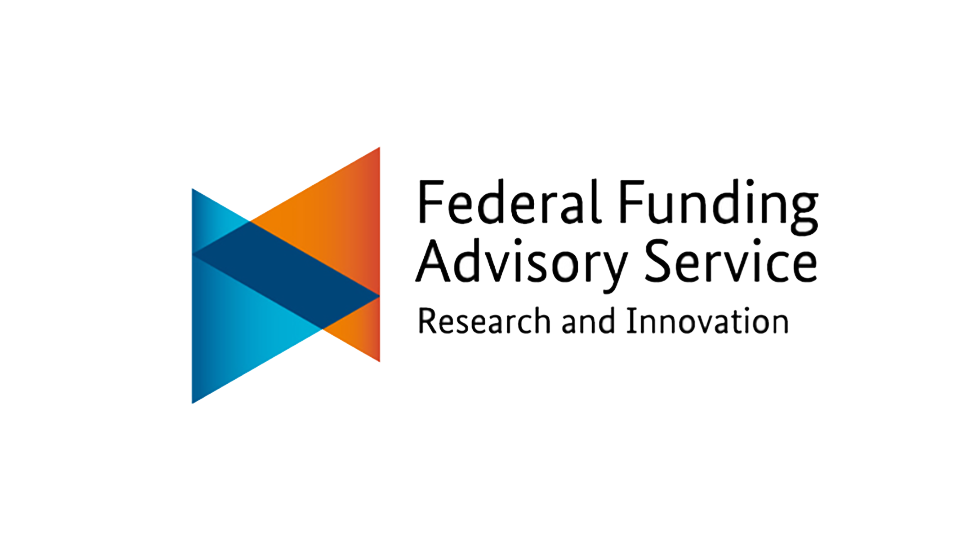Support making RiG more international!
Click here to start the surveySupport making "Research in Germany" more international! Your expertise and commitment are the key to the further development of promoting the German research landscape. We invite you to take part in our online survey and share your valuable experiences and opinions. Duration: 7-10 min.
Please start the survey at the end of your visit.
Government funding
The Federal Government places a clear emphasis on higher education, research and high technology through numerous strategies and initiatives, such as the Excellence Initiative (2005–2017), as well as its successor, the Excellence Strategy, the Internationalization Strategy and the Future Research and Innovation Strategy (only in German). Approx. 30 per cent of spending on research and development in Germany is provided by federal and state governments. Government is thus the main sponsor of research in Germany alongside the business sector.

Federal and state government financial support for research essentially consists of:
- Institutional funding: In the case of institutional funding, the government directly finances over 1,000 non-university research institutes and more than 270 public higher education institutions as well as the DFG research funding organisation. Almost 40 per cent of Germany’s federal R&D budget – 8.1 billion euros in 2021 – is spent on this kind of financial support. The country’s federal states provide an additional 2.8 billion euros in institutional funding.
- Project funding: Direct project funding is allocated to concrete areas of research and is implemented through programmes. This funding does not only benefit higher education institutions and research facilities, but also companies. However, unlike direct institutional funding, project funding is short- to medium-term in nature. Indirect project funding primarily supports the research work of smaller and medium-sized research institutes and enterprises.
- Departmental research: Ministries play a special role in the funding of science and research. They channel the federal share of funds and define their own key areas through specific programmes and more than 40 federal institutions with R&D responsibilities. German states and municipalities also act as research funding bodies and operate roughly 140 state-level research institutions that support state research activities. These institutes cover a broad range of research areas. In addition to the research carried out by federal and state research institutions themselves, research contracts are also awarded to third parties.
- R&D tax incentives: R&D tax incentives are another instrument for direct project funding. Companies of any size can apply for a tax incentive for R&D projects; this is based on expenditure for R&D personnel and for commissioned research.
- Innovation agencies: the German government has created a flexible new funding instrument, the innovation agencies, that are intended to drive forward disruptive innovations. The Federal Agency for Disruptive Innovation – SPRIN-D aims to support outstanding actors, among other things in further developing ideas with disruptive innovation potential through concrete projects. The newly founded Agentur für Innovation in der Cybersicherheit (Agency for Innovation in Cybersecurity) (only in German) is aimed at developing innovative technologies in the area of cybersecurity.

Constructive cooperation between the Federal Government and the German states
When it comes to projects of national significance, the Federal Government and the German states have defined rules that enable cooperation and influence within the German research area. This applies for example to the funding of large German non-university research organisations: the Fraunhofer-Gesellschaft, the research centres of the Helmholtz Association, the institutes of the Leibniz Association and the Max-Planck-Gesellschaft. Additionally, both the Federal Government and the states support academies of science and humanities as well as the Deutsche Forschungsgemeinschaft (DFG), which was founded jointly as Germany’s main funding organisation for research at higher education and public research institutions.
Higher education funding
In principle, Germany’s more than 270 public universities and universities of applied sciences are funded by the Länder, whose autonomy in cultural and educational matters is anchored in the Basic Law. However, the Federal Government and the states also cooperate when it comes to support for science, research and teaching. Projects of supraregional importance, such as the Excellence Strategy and the Pact for Research and Innovation, are funded jointly.
Additional research funding
In addition, the Federal Government finances large-scale scientific research projects (for example, in the fields of aviation, space, marine or nuclear research). Researchers from German universities participate in research projects involving internationally leading large research infrastructures, such as the Large Hadron Collider (LHC) at CERN in Switzerland or the new European XFEL X-ray laser facility near Hamburg.
More information:
How does government funding work?
Government and industry cooperate closely to promote research. Take a closer look at how funding flows.

Federal Funding Advisory Service on Research and Innovation
The Federal Funding Advisory Service on Research and Innovation informs potential applicants about the federal research structure, funding programmes and the points of contact as well as about current funding priorities and initiatives.

Federal Report on Research and Innovation
The Federal Report on Research and Innovation provides comprehensive information about the research and innovation policy of the federal and state governments. The main volume and the data volume can be downloaded from its own website (only in German). Additionally, links to English-language data pages can be found at:
www.bundesbericht-forschung-innovation.de